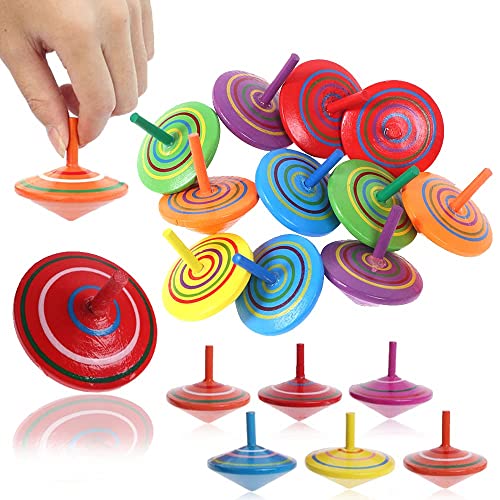How do spinning tops work?
Spinning tops have been fascinating children and adults alike for centuries. From traditional wooden tops to more modern, high-tech versions, the mechanics behind these toys are quite interesting. Read on to find out how spinning tops work.
The physics of spinning tops
At their core, spinning tops are an example of rotational motion. The physics behind the spinning top involves two main factors: angular momentum and the center of mass.
The role of angular momentum
Angular momentum is the measure of an object’s tendency to keep rotating around an axis. In the case of a spinning top, when you initially spin it with your hand, you’re transferring angular momentum to the top. This angular momentum keeps the top spinning for a longer period of time.
Once you let go of the top, the angular momentum is conserved due to the principle of the conservation of angular momentum, which states that the total angular momentum of a system remains constant unless acted upon by an external torque. This conservation allows the top to maintain its rotational motion.
The center of mass and stability
The center of mass of a spinning top is the point where all the mass of the top is concentrated and balanced. For a top to spin smoothly and remain stable, its center of mass needs to be positioned correctly.
Most spinning tops are designed with a heavier bottom and a lighter top. This configuration ensures that the center of mass is located closer to the bottom. When the top is spinning, it creates a precession motion, where the top appears to wobble slightly. This wobbling motion helps maintain the stability of the spinning top.
Friction and surface contact
Friction plays a crucial role in how spinning tops work. When you spin a top, it makes contact with the surface it’s on. The friction between the spinning top and the surface creates a torque that opposes the motion of the top, eventually causing it to slow down and stop.
However, skilled top spinners can minimize the effects of friction by using techniques like “string launching.” String launching involves spinning the top using a string wrapped around the top’s top, reducing surface contact and friction.
The impact of design and materials
The design and materials of a spinning top also affect its performance. Tops made of denser materials, such as metal, tend to have a longer spin time because they can store more rotational energy.
The shape of the top can also influence its performance. Tops with a wider base, or a low center of mass, are more stable and less likely to topple over. The precision of the manufacturing process can also impact how smoothly the top spins.
Modern spinning tops often incorporate high-quality bearings to reduce friction and increase spin times. Some tops also feature intricate designs or additional features, such as LED lights or sound effects, to enhance the spinning experience.
In conclusion
Spinning tops work based on the principles of angular momentum, the center of mass, friction, and surface contact. These factors, along with the design and materials used, contribute to the overall performance and spin time of a spinning top.
Whether you’re a fan of traditional wooden tops or prefer the modern variations, the mechanics behind spinning tops make them a fascinating toy to explore and enjoy.






